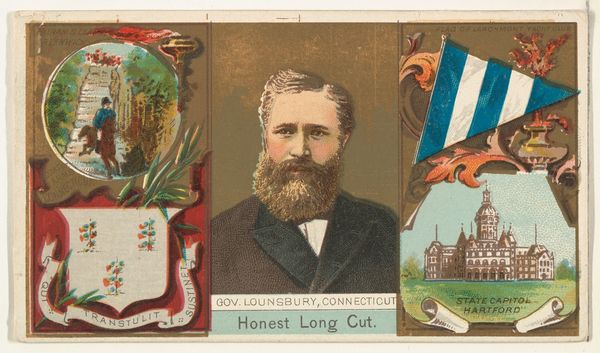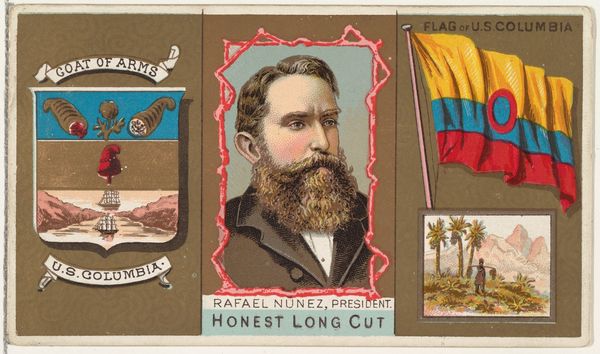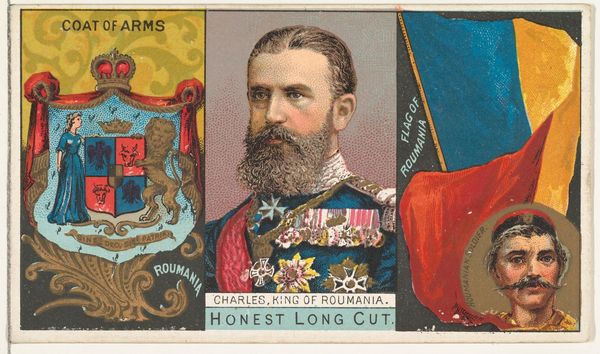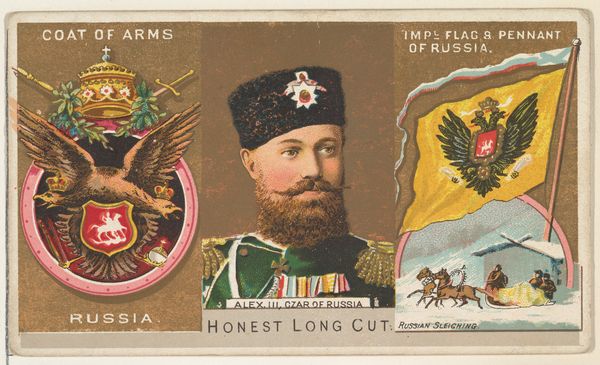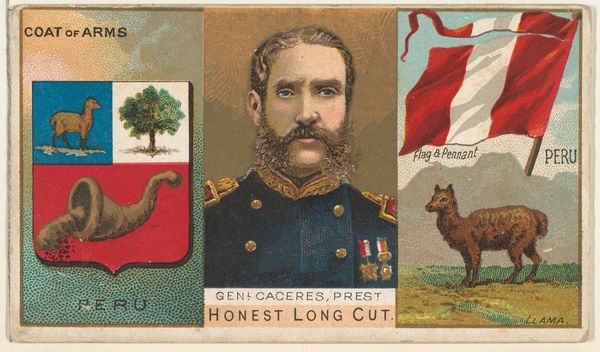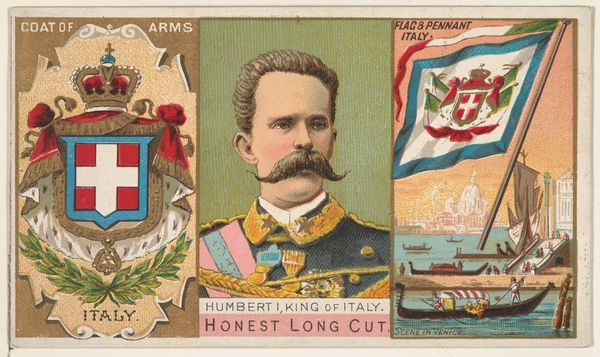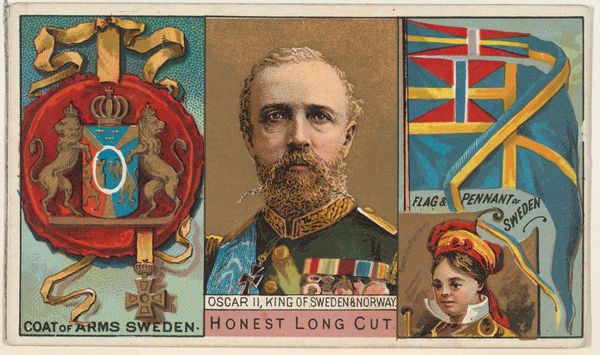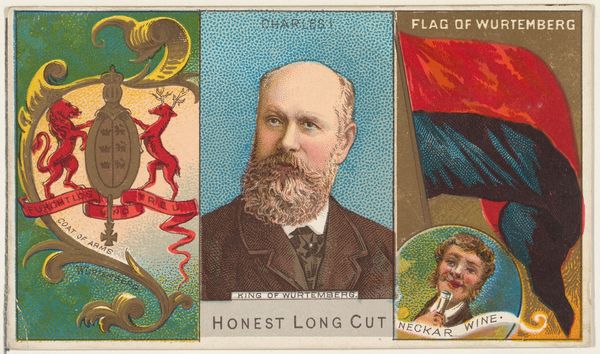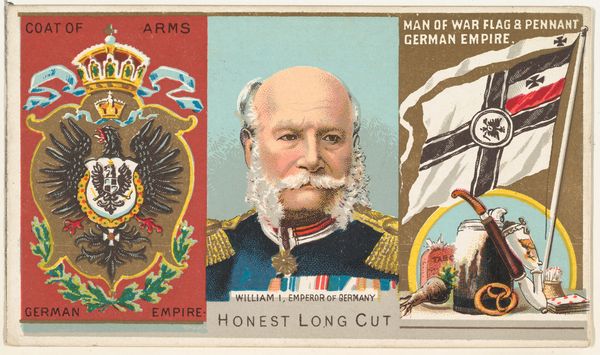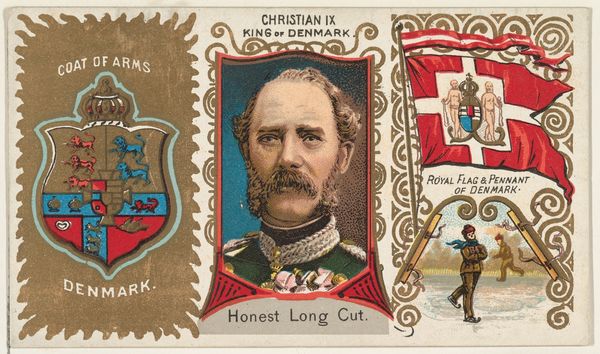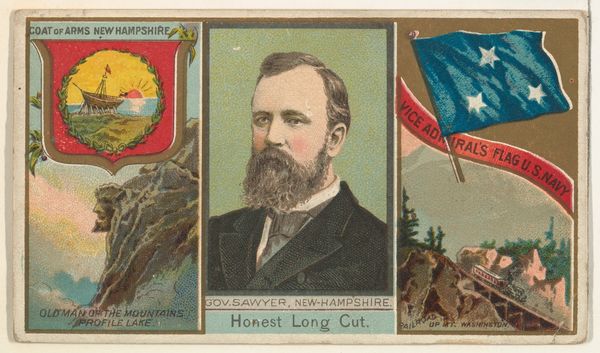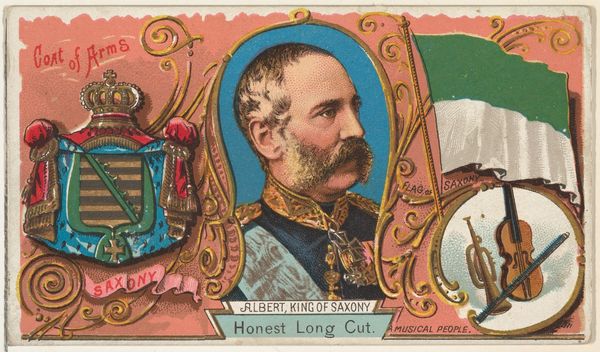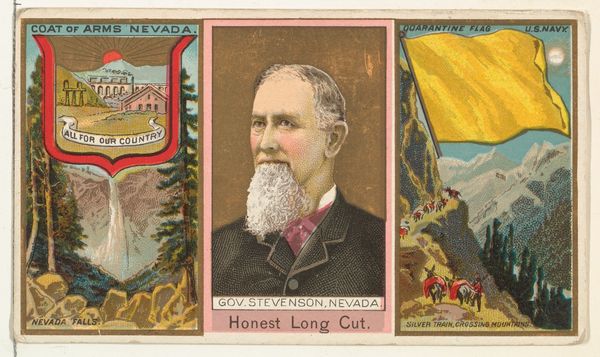
Leopold II, King of Belgium, from the Rulers, Flags, and Coats of Arms series (N126-1) issued by W. Duke, Sons & Co. 1888
0:00
0:00
Dimensions: Sheet: 2 1/2 × 4 5/16 in. (6.4 × 11 cm)
Copyright: Public Domain
Editor: This lithograph is titled "Leopold II, King of Belgium, from the Rulers, Flags, and Coats of Arms series," dating back to 1888. It's fascinating to see how power and nationhood are represented in this little card. What strikes you when you look at it? Curator: What strikes me is the juxtaposition of seemingly innocuous imagery – a king's portrait, a flag, a coat of arms – with the brutal history of colonial exploitation connected to Leopold II. This isn't just a portrait; it’s a carefully constructed image of power meant to legitimize a deeply unethical enterprise. What do you know about Leopold’s role in the Congo? Editor: I know he had… a rather infamous role. I’ve heard he essentially owned the Congo Free State and exploited its resources, leading to horrific abuses. Curator: Exactly. Understanding that history transforms this image from a simple representation of a king into a symbol of oppression and violence. Consider the series title itself, "Rulers, Flags, and Coats of Arms." It implies a natural, almost innocent connection between these symbols and legitimate authority. How does understanding this change how you interpret the imagery in the print? Editor: It’s disturbing to think that someone might collect these cards without ever questioning the source of Leopold’s wealth and power. The symbols are almost… propaganda, hiding the truth. The so-called ‘honest long cut’ inscription feels deeply ironic now. Curator: Precisely! It invites us to question the narratives embedded in popular culture and to consider how art can both reflect and conceal the realities of power, particularly within colonial contexts. What kind of responsibility do you think we have when looking at historical images such as this one? Editor: I see what you mean. We need to look critically at everything and try to uncover the hidden histories behind seemingly straightforward images. It changes everything, knowing the context. Curator: It absolutely does. This single trading card, seemingly innocuous, opens a window into the complex interplay of power, representation, and historical memory.
Comments
No comments
Be the first to comment and join the conversation on the ultimate creative platform.
